한식 읽기 좋은 날
Vol 31. Songibeoseot
Present progressive, Korean dessert
Hansik Archieve
Hansik glossary
Gamju - Sweet drink
Sikhye - Sweet rice punch
Tteok - Rice cake
Yumilgwa - oil-and-honey pastry
Yakgwa - honey cookie
Gwapyeon - dried fruit
Written by Yun Miji
(Reporter specialized in traditional clothing and traditional food culture)
The country has already collapsed, but King Suro is the fifteenth progenitor to me.
The tomb that buried him still remains, in addition to Jongmyo (宗廟),
I will let the ancestral rite to be continued ⋯ (omitted)
Every year, the liquor and the sweet liquor are made
and various delicious foods such as rice cakes, rice, tea, fruit, etc. are served
and perform the ancestral ritual so that it doesn't cease from year to year.
The traditional Korean desserts resembles the composition of the items on the ancestral ritual table. According to "Garakgukgi" of Samgukyusa, it is known that "Tteok(rice cake)", "Gamju(Sweet drink)", "Sikhye(Sweet Rice Punch)", "tea", and "fruit" were served on the ancestral ritual table. The record of 661 when King Munmu of Silla, who unified the Three Kingdoms, was reigned and Silla merged Gaya and held ancestral rites for Kim Suro and his descendants shows the contents of various Korean desserts. "Gamju" refers to rice wine made from yeast and rice, and is related to "Sikhye", while "tteok", "fruit" and "tea" are also commonly desserts eaten by ancestors in the past.
* Sesi: It refers to a particular time of the year, which comes back every year. January 3rd and 7th / May 5th / August 8th and 15th
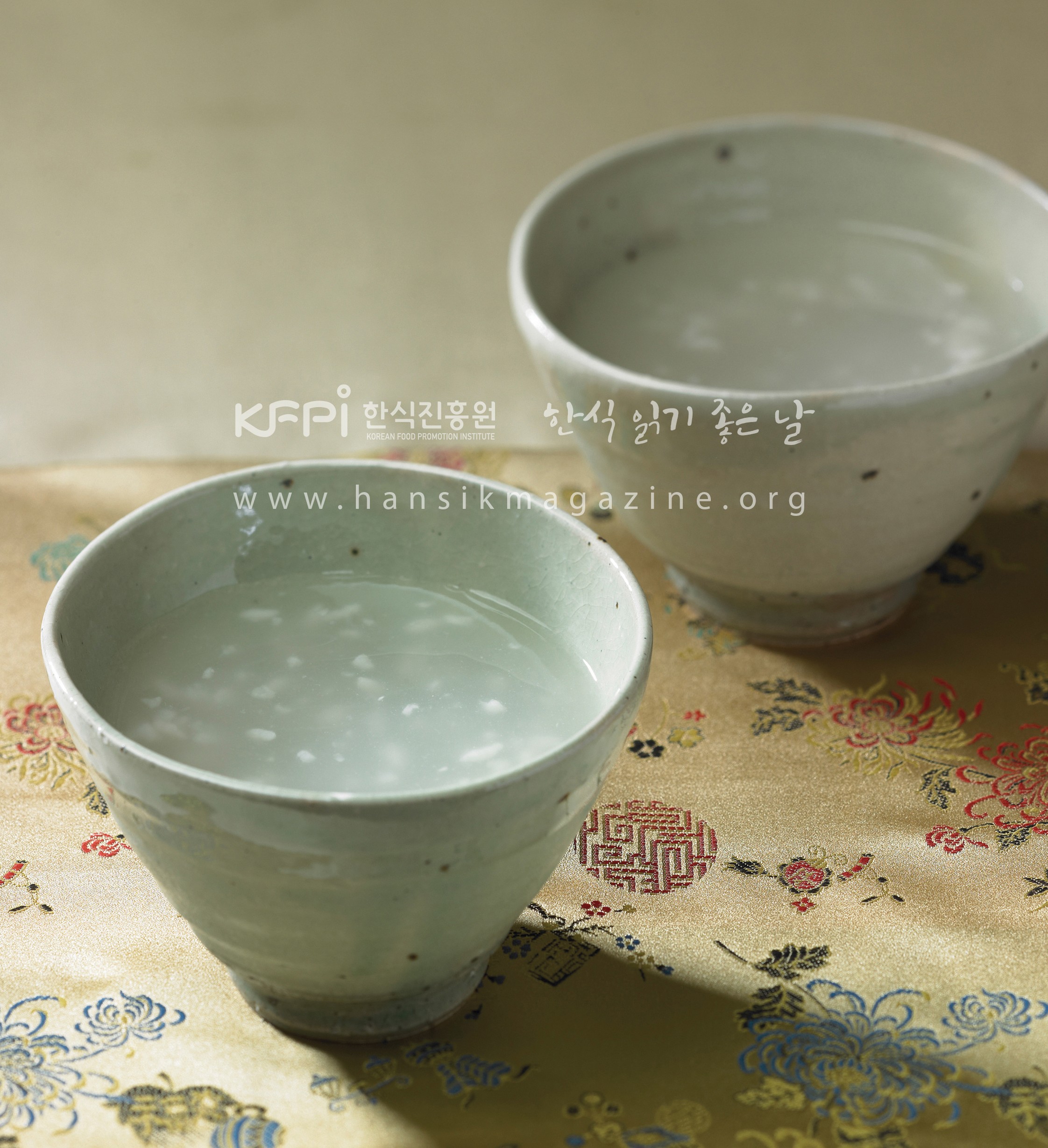
Sikhye ⓒ Korean food promotion institute
Various faces of Korean desserts
When it comes to Korean desserts, most people think of Yugwa(oil-and-honey pastry), Yakgwa(honey cookie), and tteok. The review on the origin of traditional snacks in the past, will bring you to find the form of cooking dough by boiling or frying the dough and eating it sweetly with honey. A representative example of this is Yumilgwa(a kind of oil-and-honey pastry). Yumilgwa is classified into several types depending on its shape, and the Yakgwa which we are familiar with belongs to this. In the past, during the Goryeo Dynasty, fish and meat could not be served in ancestral rite, so the reason why Yumilgwa production were active is related to this. It was made with the shape of fish or fruit to put them on an ancestral rite instead.
Talking a little bit more about this 'Yumilgwa', and 'Yumilgwa' in the past is slightly different from Yakgwa' that we can easily enjoy now. It differs in many ways, but the most distinctive thing is that 'Yakgwa' belongs to quite a luxurious sweets. The reason can be easily understood by taking a peek at the manufacturing process of 'Yumilgwa.
First, flour, honey and sesame oil are needed to make 'Yumilgwa'. At that time, flour, oil, and honey, which were all precious ingredients, were used, and a large amount of sesame oil was used in the process of frying dough, which also explains why "Yumilgwa" was treated as a high-quality snack. In modern times, factory-manufactured yakgwa can be purchased at a low price, but during the Goryeo Dynasty, when "yumilgwa" was extremely popular, the government even announced to ban making and eating them in consideration of waste of precious ingredients, consumption aspects and stability of people's livelihoods.
Also, we cannot omit 'Gwapyeon,' which refers to dried fruit, among Korean desserts. "Gwapyeon" is recorded as Korea's first snack, and the related contents are shown Kim Yusin episode of Samgukyusa. In 613, when Kim Yusin of Silla was nearly kidnapped after lured by a Goguryeo spy, three patriots god appeared disguised as woman to save him. The woman serves delicious snacks to Kim Yushin, revealing the truth of the spy, and saved him. The snacks that appear here are estimated to be Gwapyeon.
'Gwapyeon is said to mainly use sweet and sour cherries, apricots, and omija. In expression, it was called dried fruit literally, but the method of making it was not so simple. After boiling down fruit, then harden it, and then cut it into bite size.
Korean desserts do not end here. 'Sikhye' is the first thing that comes to mind when thinking of Korean traditional drinks. In particular, 'Sikhye' is one of the foods that are served on the ancestral rite as Jwapowuhye, and its history is very long. It can be seen that Korean ancestors tasted various drinks as desserts after meals, in addition to solid food such as 'Hangwa(traditional cookie)', 'Tteok' and' Gwapyeon', which are tasted as snacks.
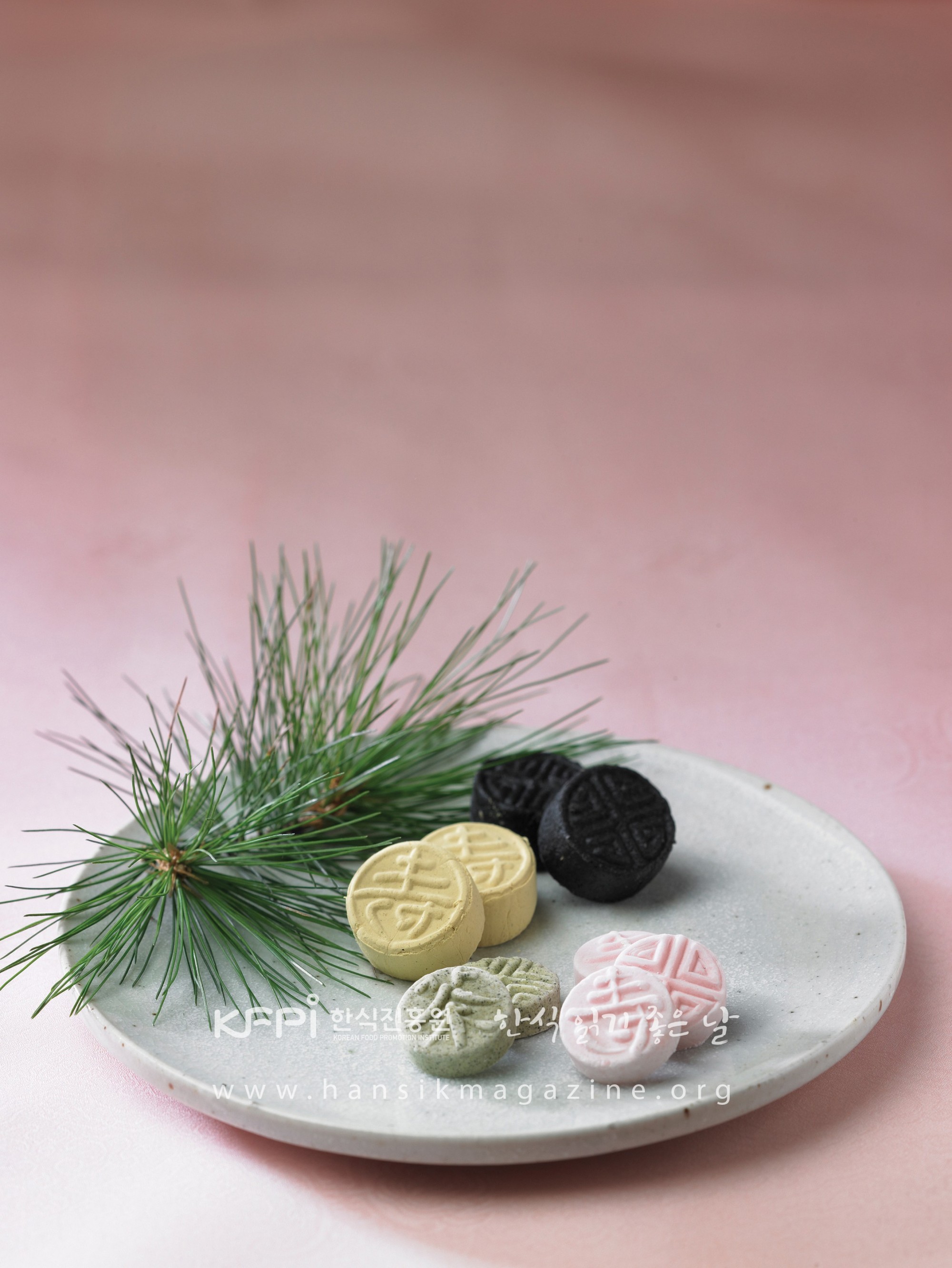
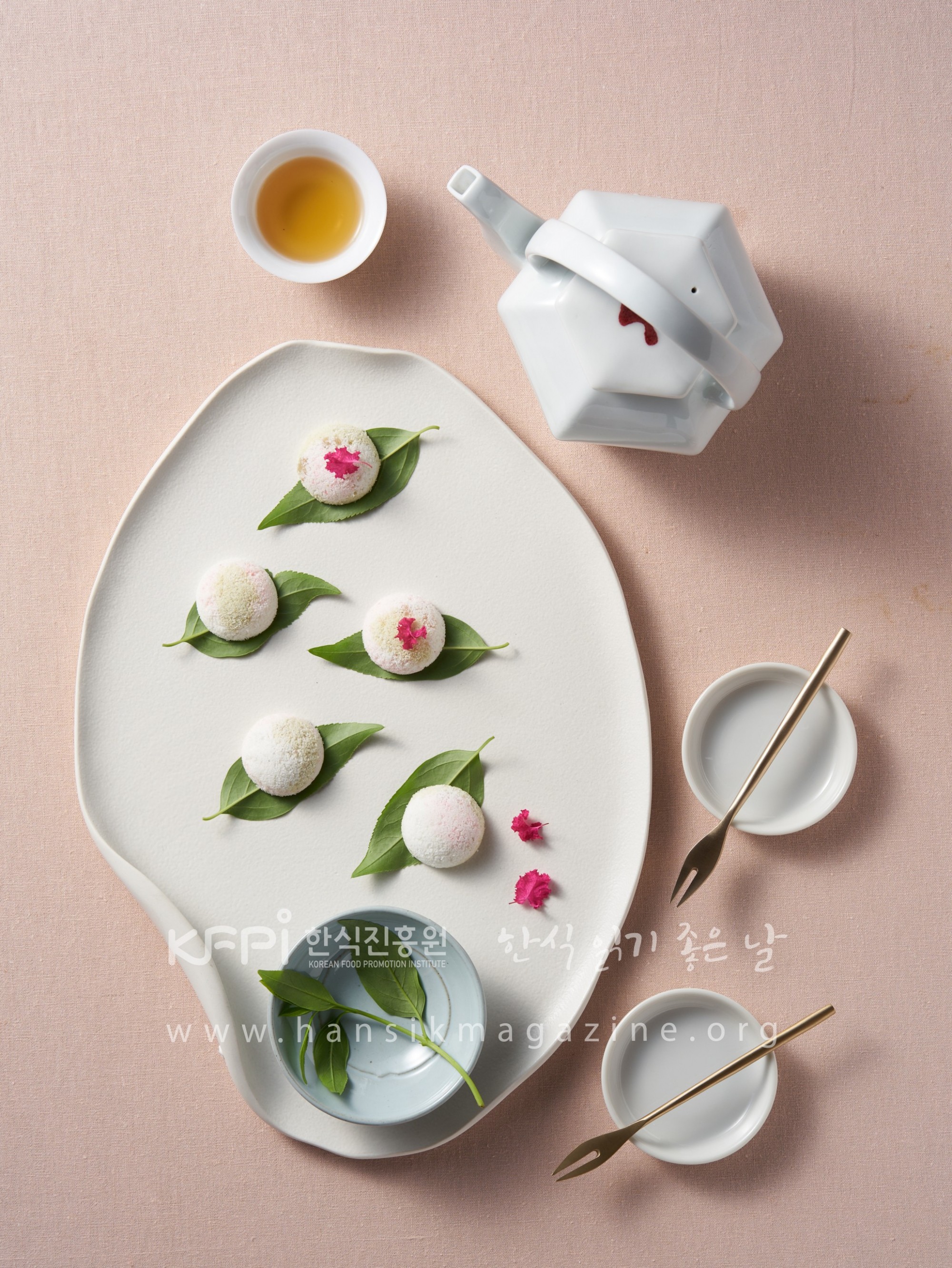
Dasik(tea confectionery) and gyeongdan(sweet rice balls) ⓒ Korean food promotion institute
Modernization of Korean dessert
In modern times, western desserts are everywhere and we face many options for snacks after eating meal. Nevertheless, traditional snack is constantly changing and solidifying its position in such a trend. In particular, it is no exaggeration to say that "tteok," a snack enjoyed by old ancestors, is an eternal bestseller by Koreans.
"Tteok" has been a food for ancestors throughout its long history and now gives us the drive to develop excellent recipes. We can estimate the tteok was made and eaten from the primitive agricultural society, and that it was shared with many history through relics. "tteok" is a food cooked by steaming or boiling grain powder, and grain food was something common to our ancestors, and it could solve precious meal.
In modern times, the ingredients used in this 'tteok' are diversified and are capturing a popular taste. In the past, most production focused on traditional recipes such as songpyeon, sirutteok, and Injeolmi, but recently, attempts to transform this tteok to attract more interest from various age groups are remarkable.
Basically, honey is added between the each layer of Baekseolgi to add a sweet taste. It is called 'Ggulseolgi' and the harmony of plain taste of tteok and the sweetness of honey has gained the popularity regardless of age or sex. In the past, Sirutteok was manufactured in a large square shape, but in modern times, various attempts are being made so that busy modern people can taste it as a substitute for a meal by packaging it in small size.
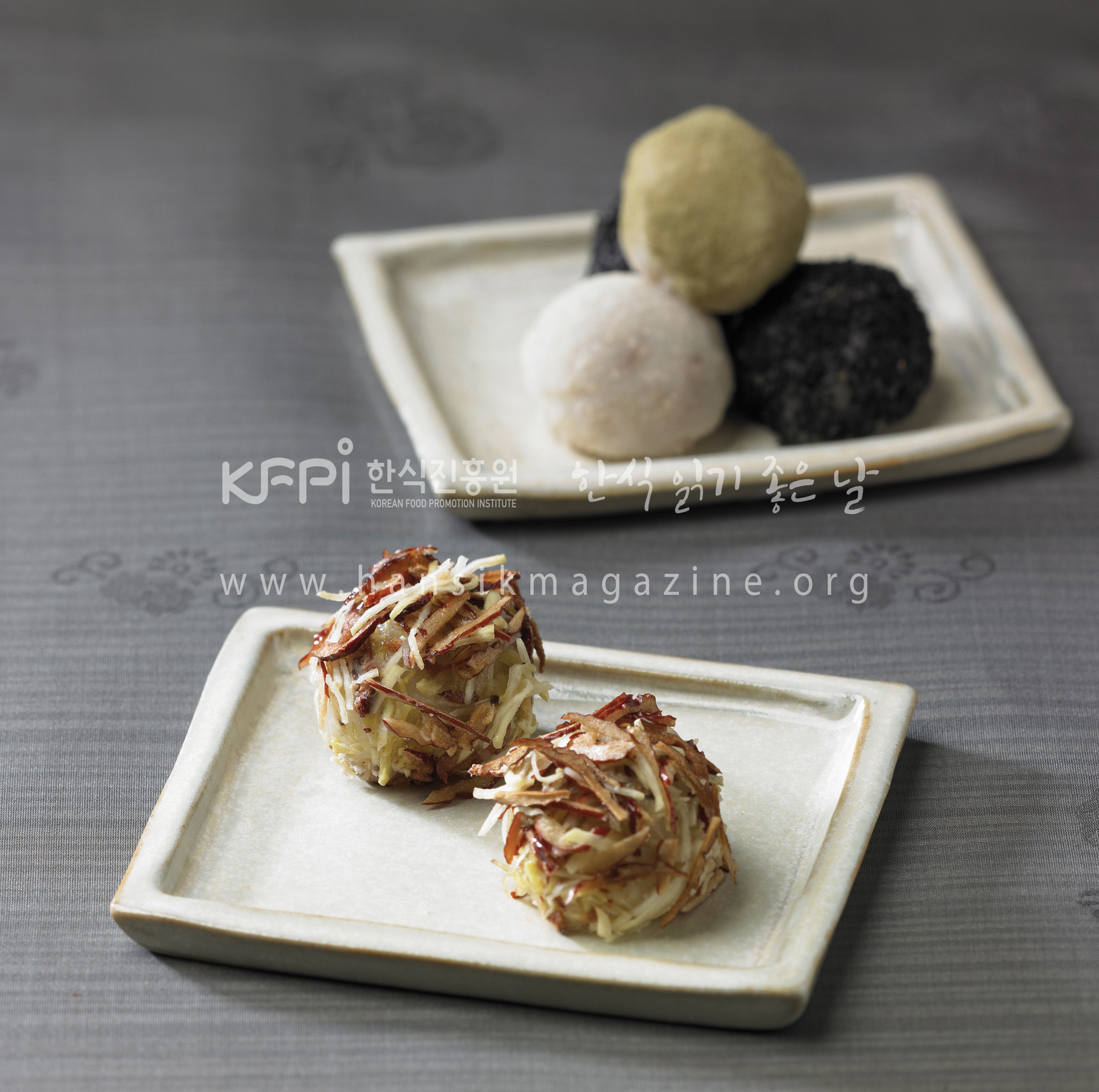
gyeongdan(sweet rice balls) ⓒ Korean food promotion institute
Korean desserts remarkable recently
Not just honey added in 'tteok'. If honey plays a great role as an ingredient in Korean food, dairy products such as cheese and cream, which seems to be unsuitable at all, are also being used as ingredients in 'tteok'. The recipe originated from butter bread made by layering bread with red bean paste or butter has enjoyed the great popularity. It is made using 'tteok' instead of bread, and it contains red bean paste, which is commonly used as an ingredient in tteok, and adds butter or cream cheese for a soft taste.
Recently, the shape of traditional snack itself has been transformed into a modern style, and diversity of Korean desserts is being pursued through an attempt to combine traditional Korean ingredients with popular Western-style desserts. Ingredients traditionally used in Korean cuisine, such as black sesame, corn, and mugwort, are also used in ice cream and western style bread.
The development of Korean desserts, which went through changes in the long history, is much more endless. The savory-filled mugwort and black sesame, which seemed to only suit the taste of adults, are combined with sweet ice cream and castella, captivating the taste of the younger generation. Free from the recognition of being too sweet, honey and cream are combined with plain sirutteok and completed as a popular snack. The present progressive of Korean desserts attempting to reduce the gap in taste between generations, will be expected.
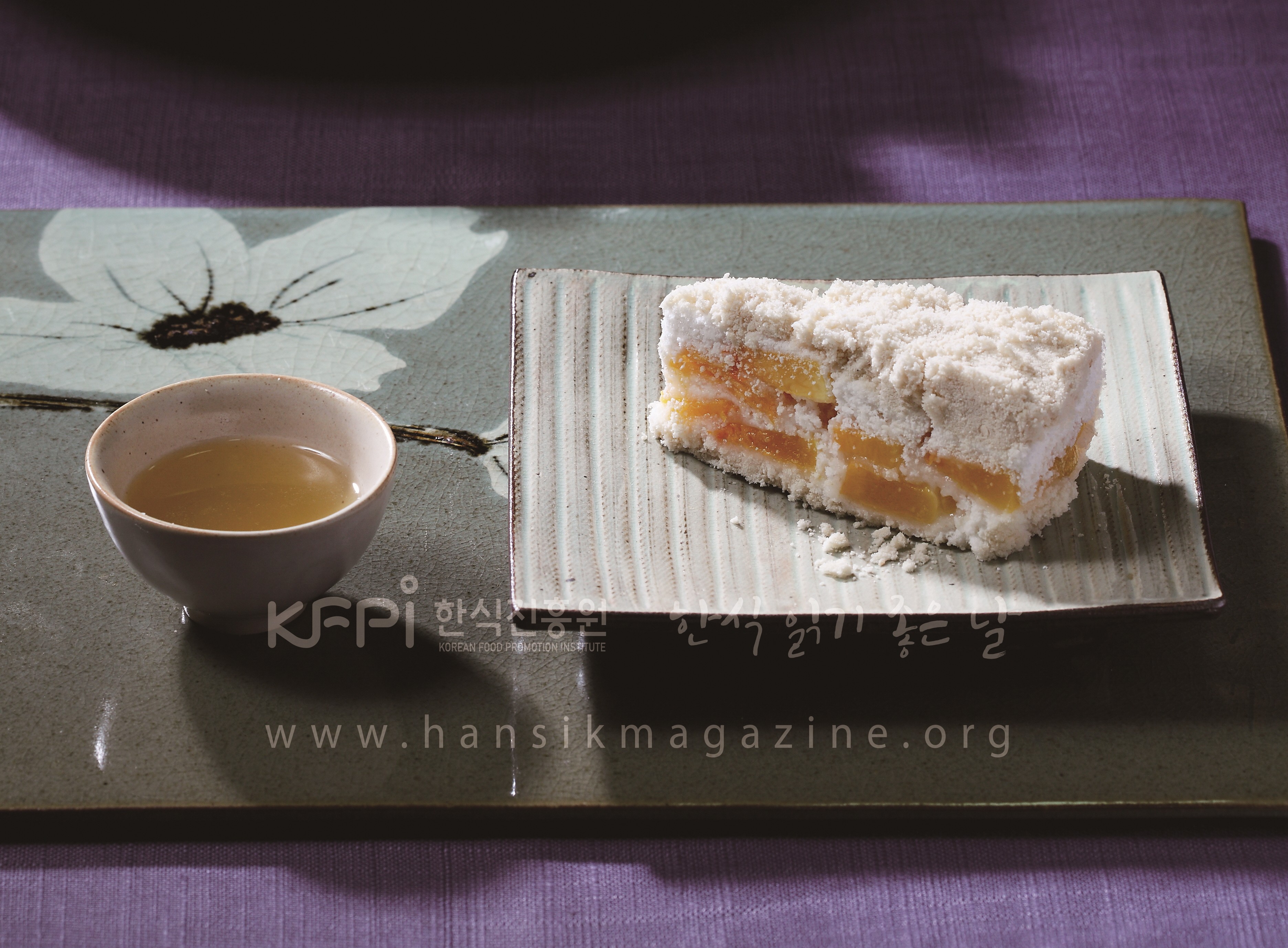
Tteok ⓒ Korean food promotion institute
[Reference] Korean History Database Samgukyusa Garakgukgi Episode
Yun MiJi
Writing about traditional clothing and traditional food culture to various media.










